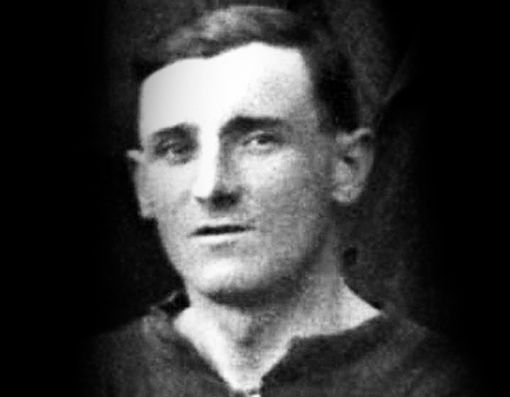Joe Toner – Ireland, Arsenal and Down star
Joe Toner – Ireland, Arsenal and Down star
3 March 2021

HE was a sporting tour de force who played football for Ireland and Arsenal. Joe Toner also played Gaelic footballer for Castlewellan and lined out on the hurling field for Down.
He was born on March 30, 1894. As a young man, his athleticism earmarked him as a star in the making.
The GAA influence was strong one in his family. His nephew Pat Rice was a member of the Down team which
famously brought the Sam Maguire Cup north of the border for the first time in 1960.
Reared at Bunkers Hill, he played soccer for Castlewellan Stars and neighbours Annsborough, before he went on to shine with Belfast United in the midst of World War One.
Following the end of the war he came to the attention of Arsenal’s talent scouts and was whisked off to the famous London club in 1919, in time for their return to the First Division following promotion.
He made his debut against Everton in the newly-built Highbury stadium in October 1919. Wearing the No 11 shirt, he helped his new team-mates to a 3-2 victory. He would go on to make 100 appearances for the Gunners.
Arsenal, like so many post-war clubs, were one in various stages of flux. The team would change regularly with players often struggling to keep their place for one reason or another.
In his second season at the club, he did not feature until December.
Arsenal would end the campaign ninth in the table.
Despite his infrequent Arsenal appearances, international honours came along. He made his Ireland debut on April 4, 1922, against Wales. The match at Windsor Park was played in front of a crowd of 20,000 and finished in a 1-1 draw. He would play eight times in all for Ireland.
The arrival of the great Herbert Chapman as manager of Arsenal in 1925 coincided with even fewer chances for Toner.
He played only two games at the start of the 1925-26 season and in January 1926 he went north of the border and signed for Scottish side St Johnstone.
However, he was immediately hit by injury, breaking his leg in his first full season. That injury would ultimately force him out of the club at the end of the 1926-27 season after 29 games.
The following year he returned home to Northern Ireland, going on to coach Coleraine. In fact on one occasion, owing to so many injuries in the Bannsiders’ team, he even made a playing appearance.
A descendant of Joe’s, Peter Toner, who now lives in Cumbria in England, said Joe’s achievements were a source of great pride to his family.
“I had a telephone conversation with his late son Gerard [who passed away in 2015], who was immensely proud of his father’s footballing prowess,” Peter said.
“He claimed that Joe excelled in any position on the pitch. He recalled him playing for a Whitehaven side, as well as another team in a town a few miles away. That team, we later confirmed, was Cleator Moor.”
Remarkably, Joe is also remembered with affection at St Johnstone, even though it is almost century since he played for the Perth-based club, which plays at Muirton Park.
The official St Johnstone club website still publishes a testament to his role in their history today.
“Joe Toner’s place in St Johnstone history is assured by virtue of one simple fact: he was the first player to receive international recognition while playing for the club. He came to Perth from Woolwich Arsenal, having already been capped for his country – which was Ireland.
“A tricky, pocket-sized left winger, he had an unfortunate start to his Muirton career. He signed in January 1926, and made his debut on the sixth of that month in a First Division match against Motherwell.
“Saints lost 4-1, but the Perthshire Advertiser, displaying an unusual degree of inaccuracy noted: ‘The Englishman [sic], who is by no means a giant, gave indications of being a sound investment for the Saints. He made the most of any chances he got, but I do feel that he was needlessly starved in the second half’.”
In his relatively brief time at Muirton Park he had distinguished himself by becoming the club’s first capped international player.
Upon moving back to Castlewellan, his life was touched by tragedy after his wife Elizabeth died in her early 40s from influenza. This left Joe to not only mourn her passing, but to raise their family of ten children single-handedly. He died in Castlewellan in November 1954 at the age of 60.
His descendant, Peter, remarked: “Joe certainly had a remarkable life and left his mark, not just in his local area, but on the playing pitches of England and Scotland too.
“The family are very proud of his achievements, despite the difficulties he experienced at times in his life away from sport.”


